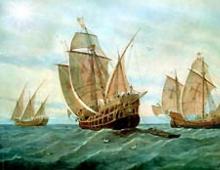Tanzania on the world map. Tanzania on the world map
Tanzania on Africa map
(all images are clickable)


Tanzania is surrounded by eight African states, including tiny Burundi, Rwanda, as well as Malawi, Uganda, Zambia. The largest "neighbor" is the Democratic Republic of the Congo, and the country has the longest land borders with Mozambique (in the south) and Kenya (in the north). The eastern borders are washed by the Indian Ocean.
Geographical position
The total area of Tanzania is 945.2 thousand km². The center occupies a vast plateau, mountain ranges stretch in the north. It is here that Kilimanjaro is located, the highest African mountain, and in combination - a potentially active volcano. Along sea coast there is a strip of low plains.
Six rivers flow through the country, several large lakes are also located here - Tanganyika, Nyasa, Victoria. The state owns a number of islands, including Zanzibar, which became part of Tanzania in 1964.
In general, the climate of Tanzania is subequatorial. This state (like many other countries in Africa) is in the strip of eternal summer. There are no pronounced seasons, periods of drought are replaced by rainy seasons - in the north they occur twice, in spring and autumn. In the southern part of the country, humidity is increased throughout the winter, sometimes until the end of April.
Distance from the sea significantly affects the temperature. Closer to the mountains, it stays in the region of +20 - +23 ° C, in coastal areas, on average, five degrees warmer. On the islands, the thermometer shows about +30 - +32 ° C, but the local heat is easily tolerated due to the constant ocean breeze.
Flora and fauna
Tropical forests that once covered vast areas of the country have survived only on the slopes of the mountains. Today, the predominant type of vegetation is savannas.
Tanzania has preserved its original flora and fauna thanks to a huge number national parks. Fabulous East Africa, which is told by fascinating documentaries, is right here. Savannahs are adjacent to deciduous forests and mangroves, giving shelter to a huge number of birds, animals and insects.
Traveling in Tanzania, you can see elephants and giraffes, rare black rhinos, amazing motley colobus monkeys. Lions and cheetahs, ostriches and zebras are found here, hippos and crocodiles are found near water bodies, dolphins frolic in the sea waves. Among such magnificence, there are very dangerous creatures, in particular, the tsetse fly and the black mamba.
State structure

Tanzania map
Tanzania - United Republic, which emerged after the reunification of mainland Tanganyika and island nation Zanzibar and Pemba. The head is the president, and the main legislative body is the Bunge (unicameral parliament). The legal system was left as a "legacy" from the British colonizers. The country is divided into thirty regions. The official capital is Dodoma, the most important administrative center is Dar es Salaam.
Population
The population of Tanzania is growing rapidly: at the end of the 20th century, about 30 million people lived on its territory, and in 2014 (according to UN estimates) - already about 50 million. The birth rate is three times higher than the death rate. Most of the citizens are descendants of indigenous peoples (Bantu), in the island part there are many people from India and Arab regions.
The country speaks several languages - from local African dialects to official English and Swahili. Every second resident considers himself a Christian, a third of the population professes Islam, the rest adhere to traditional pagan beliefs. Sanitary conditions and health care are far from world standards, malaria is widespread, and the level of AIDS infection is high.
Economy
Tanzania is a poor state with rich resources and excellent prospects. Deposits of nickel, iron ore, tin, and gold have been discovered here. Precious stones (including diamonds) are mined. It has its own coal and natural gas reserves. At the same time, the industrial sector is very poorly developed, mainly the country exists thanks to agriculture. Most of the exports are cotton, cashews, coffee and gold. Machinery, fuel and consumer goods are imported. Tourism is actively developing.
Mainland modern Tanzania always attracted foreigners with its riches - ivory and gold were exported from here. An important source of income was the slave trade.
Bantu peoples were among the first to settle these territories. Local tribes traded with the countries of North Africa and the East. In the Middle Ages, colonies of Persian merchants appeared here, later the Arabs settled. In the XV-XVIII centuries. the coast of East Africa was captured by the Portuguese.
At the end of the 19th century, a redrawing of the map of African countries began, and a political struggle began for this territory between Germany and Britain, which, with the outbreak of the First World War, turned into a phase of open armed clashes.
In the future, the British winners took up the active creation of plantation farms in Tanganyika. Zanzibar remained a sultanate. After gaining independence (in 1961-1963), a successful uprising took place on the islands, the old authorities were overthrown and both halves of the state united.
Attractions
Tanzania is rich in sights - Dar es Salaam and Stone Secrets are famous unusual architecture and national cultural events. The islands are ideal for a beach holiday, and mainland with its reserves provides the best opportunities for ecotourism.
Tanzania photo




- Area: 945,203 km²
- Population: 38 860 170 people
- Capital: Dodoma
- Language: English, Swahili
- Currency: Tanzanian shilling
The United Republic of Tanzania is a country located in East Africa. Tanzania borders many African countries such as Rwanda, Congo, Burundi to the west and Uganda and Kenya to the north. In the south, Tanzania has borders with Mozambique, Zambia and Malawi. More details about the borders of Tanzania can be found by looking at the world map.
The eastern borders of Tanzania are washed by the Indian Ocean, which makes the coast attractive for tourists who prefer beach holiday. The country's climate also contributes to beach holidays.
The uniqueness of Tanzania lies in the fact that this country has 2 capitals, one is the administrative center - Dar es Salaam, and the second capital is the legislative center of the state - Dodoma. All government bodies were moved to this city in the 1970s.

You can find out where Tanzania is on the interactive map of the world.
detailed map presented in Russian.
The greatest wealth of this state, which arose in 1964 as a result of the unification of Tanganyika and Zanzibar, is nature. AT national parks and reserves here protect plants characteristic of the subequatorial climate, as well as animals, in particular, unique species of predators and ungulate herbivores. The Masai are a people living in the borderlands of Tanzania and Kenya.
The customs of the tribe had a strong influence on the formation of many cultures of this part of Africa, but at the same time they themselves have not changed much since ancient times. The Maasai people live by nomadic pastoralism. The lowest annual precipitation level is recorded in the central part of the country, where it is 500-600 mm. On the coast, this figure, in turn, reaches 900 - 1400 mm, and on the southwestern and eastern slopes of the mountains - 1500 - 2000 mm.
The southern and western parts of the country are covered with deciduous forests. In the mountains at an altitude of more than 4000 meters, subalpine thickets predominate, and above - Afroalpine type vegetation. Agriculture is the source of livelihood for almost 90% of the population of Tanzania and generates 50% of GNP. One of the most important crops is plantain, a banana variety, mealy, containing a large amount of starch, the fruits of which, boiled or baked, are included in the daily diet. local residents.
Tanzania on the world map
The Catholic faith is professed by 34% of the population, Islam - 33%; the rest are adherents of animism, Hinduism and Protestantism. The basis of the economy of Tanzania, which belongs to the poorest countries in the world, is agriculture. Agricultural land occupies more than 50% of the territory, in crop production - about 17%. Mostly food crops are grown here, such as corn, cassava, bananas, sorghum, rice and sweet potatoes; coffee, cotton, tobacco, tea, cloves are intended for export.
Farms growing clove are concentrated on the islands of Zanzibar and Pemba (the country is the world's largest producer of this seasoning). Tanzania is also famous for its agave plantations, from which sisal fiber is obtained. Cattle, sheep and goats are bred in the savannas, but the tsetse fly does not allow livestock to develop intensively.

Importance for Agriculture countries also have fishing and beekeeping. The territory of the state is rich in minerals such as diamonds, rubies, sapphires, gold, phosphorites, rock salt, kaolin and iron ores; there are also explored deposits of uranium ores, niobium, copper, titanium and natural gas. The most important industries are the textile and food sectors, such as the production of clove oil.
Enterprises of the metallurgical, paper, chemical and cement industries are scattered throughout the country, and an oil refinery operates in Dar es Salaam. Since 1981, the official capital of the country has been Dodoma, a major industrial and agricultural center, but to this day, part of the state bodies are located in former capital Dar es Salaam. This city has an interesting National Museum, and in the vicinity - the ruins of ancient cities. Popular tourist center is the island of Zanzibar, famous beautiful beaches and architecture of the Stone Town.
Where is Tanzania located on the world map. Detailed map of Tanzania in Russian online. satellite map Tanzania with cities and resorts. Tanzania on the world map is one of the most exotic and vibrant countries in the African region with its capital in the city of Dodoma.
Tanzania has two official languages - English and Swahili, but in addition to them, residents in various regions of the country speak more than a hundred different dialects. The eastern part of Tanzania is washed by the Indian Ocean, which makes this African country very attractive for beach holidays and diving.
Map of Tanzania in Russian with attractions:
Tanzania - Wikipedia:
Population of Tanzania- 55 572 201 people (2016)
Capital of Tanzania- Dodoma
Tanzania dialing code - 255
Tanzania internet domains-.tz
Languages spoken in Tanzania - English language, Swahili
In the territory Tanzania there are numerous lakes. Among them - the deepest lake of the African continent - Tanganyika and the largest - Victoria. In general, the nature of Tanzania is considered one of the most beautiful in the world due to the variety of tropical plants and flowers, wonderful sandy beaches and many nature reserves and national parks, where everyone can see all the beauty wildlife Africa.
Climate of Tanzania- monsoon continental, characterized by warm air temperatures throughout the year. It is somewhat cooler on the coast, while in the central regions of the country it is arid and hot. The hottest months are winter, when the average air temperature fluctuates between +32...+35 C.
Tanzania- not only a country with beautiful nature, but it is also an ancient state with sights and historical heritage. The most beautiful cities in Tanzania are the capital Dodoma in the center of the country, coastal Dar es Salaam, which is the main port of the country, ancient city Bagamoyo and the island of Zanzibab, where the unique architectural complex Stone Town is a UNESCO World Heritage Site.
Holidays in Tanzania varied and interesting. This is a beach holiday, and a trip to national parks, a relaxing holiday on the lakes and active sports.
What to see in Tanzania:
national park Tarangire, Serengeti National Park, Kilimanjaro National Park, Mafia Island, Lake Manyara National Park, Pemba Island, Stone City, Mahali Mountains National Park, Stone City Anglican Cathedral, Beit Al Sahel Palace, Kaole Ruins, Ruaha National Park, House of Wonders (Beit el-Ajaib), National Museum of Tanzania, Gombe Stream National Park, St. Joseph's Cathedral, Old Dispensary, Museum natural history in Arusha.
Useful data for tourists about Tanzania, cities and resorts of the country. As well as information about the population, currency of Tanzania, cuisine, features of visa and customs restrictions in Tanzania.
Geography of Tanzania
The United Republic of Tanzania is a state on east coast Africa. It borders Kenya and Uganda to the north, Rwanda, Burundi and the Democratic Republic of the Congo to the west, and Zambia, Malawi and Mozambique to the south. The eastern border is the Indian Ocean.
Tanzania has two capitals: the administrative center is historical capital Dar es Salaam, and the legislature - Dodoma, where the government moved the main organs in the 1970s.
Most of the country is occupied by vast plateaus. Along the shore indian ocean the coastal lowland stretches. The territory of the country includes part of the largest lakes in Africa - Lake Victoria in the north, Lake Tanganyika in the west, and Lake Nyasa - in the south of Tanzania. Tanzania has the most high mountain Africa Kilimanjaro (5895 m).
State
State structure
Tanzania is a presidential republic. The head of state and head of government is the president. Parliament is a unicameral State Assembly (Bunge).
Language
Official language: Swahili, English
Arabic is widely spoken in Zanzibar, and there are many local Bantu languages in the mainland.
Religion
Religions: in the mainland - Christians 30%, Muslims 35%, aboriginal cults 35%; Zanzibar is over 99% Muslim.
Currency
International name: TZS
The Tanzanian shilling is equal to 100 cents. Officially in circulation are banknotes of 500, 1000, 2000, 5000 and 10,000 Tanzanian shillings and coins of 5, 10, 20 and 50 cents, 1, 5, 10, 20, 50, 100 and 200 Tanzanian shillings. In fact, coins of less than 50 shillings fell out of circulation.
Currency can be exchanged at banks and exchange offices. The exchange receipt must be kept before leaving the country. It is not forbidden to change money at street changers, but in this case the risk of fraud is extremely high.
Credit cards have limited circulation. Usually they are accepted only by large banks, supermarkets (especially in port areas) and some travel agencies. In the provinces, paying with a credit card is much more difficult. For the service of withdrawing money from credit card some provincial banks charge a commission of 6-8% of the amount.
Travel checks can be cashed at registered dealers, banks or exchange offices. A passport is required for cashing out. Often, checks are very carefully checked for authenticity, which takes a lot of time.
Popular Attractions
Tanzania Tourism
Office Hours
Banks are open from Monday to Friday from 08.30 to 12.30-16.00, and from 08.30 to 13.00 on Saturday.
Purchases
VAT (VAT, Value Added Tax) on all goods and services is 20% and is included in the price.
Shops are usually open from Monday to Friday from 08.30 to 12.00, and from 14.00 to 18.00, on Saturday - 08.30 to 12.30. Some shops are open on Sunday. During Ramadan, many restaurants and shops are closed during the day, and smoking and drinking restrictions may be in place.
Souvenirs
The country produces unique Tanzanian green tourmalines, sapphires, garnets, rubies, emeralds and diamonds, as well as the mineral tanzanite, found exclusively in Tanzania in the volcanic deposits of Mount Kilimanjaro. All this splendor of the gifts of the earth's bowels can be purchased in the markets and in private jewelry stores.
The medicine
Immunization against tetanus and hepatitis A is recommended. Epidemic outbreaks of meningococcal meningitis, typhoid, malaria and plague are occasionally recorded. In rural areas there are cases of infection with African fever. When swimming in fresh water, there is a high risk of contracting schistosomiasis. Vaccinations against yellow fever, typhoid, cholera and malaria are recommended.
Sleeping sickness, which is spread by the tsetse fly, is quite common in the wooded areas of the country. Also of great concern to the world community is the rapid spread of HIV and AIDS in Tanzania.
All water should be considered potentially contaminated.
Security
Expensive photo and video equipment, valuables or documents should not be shown. It is not recommended to walk alone at night through the streets. Do not leave things unattended. You should always carry a photocopy of your passport with you, and keep your passport, money and air ticket in safe place(safe in the hotel).
Foreigners are the object of constant and overly intrusive attention. Do not give in to the offers of local residents to help with something. This usually ends in problems.
Emergency Phones
The unified telephone number of rescue services is 112/999.
Photo and video shooting
It is not recommended to take pictures of local residents without their permission and to visit the dwellings of local residents on your own (without a guide or a representative of a travel agency). In some places you need to pay for photography, but you should not do this everywhere and always - many natives try to beg for money in this way.
Questions and opinions about Tanzania
Zanzibar - Q&A



